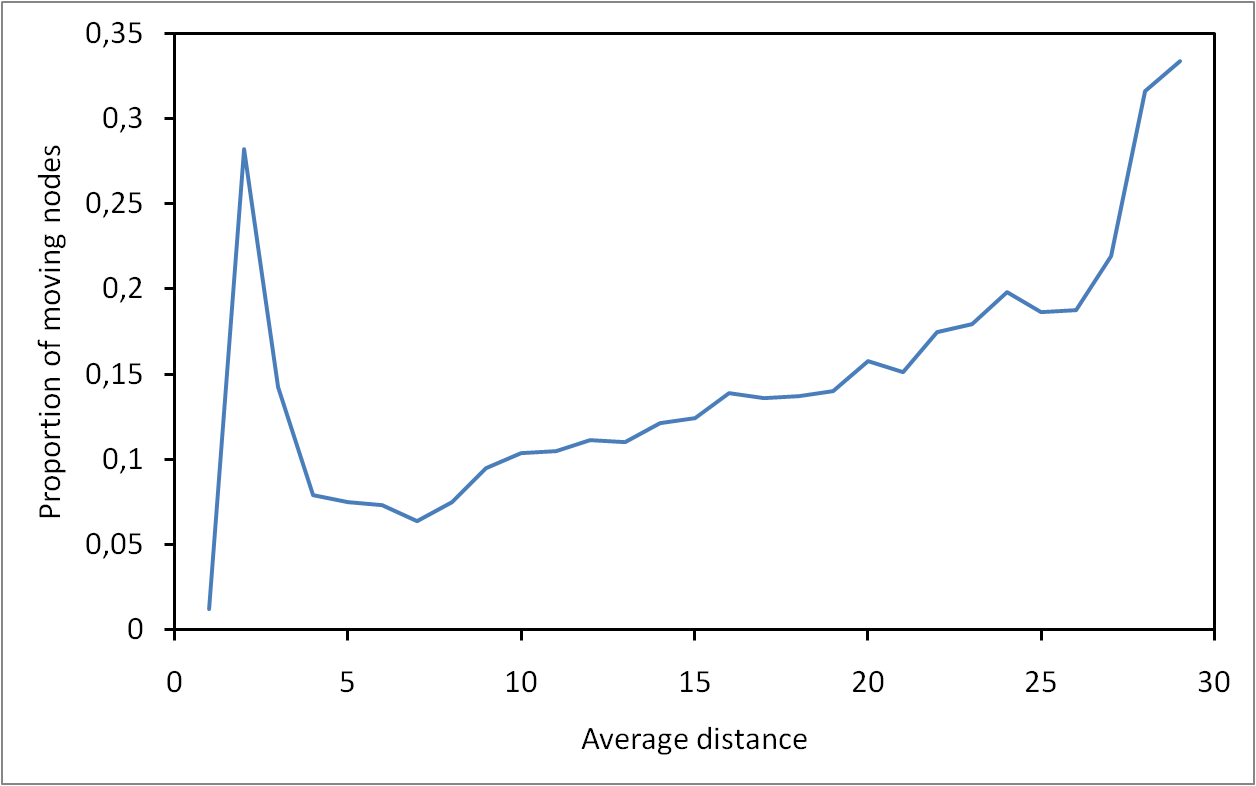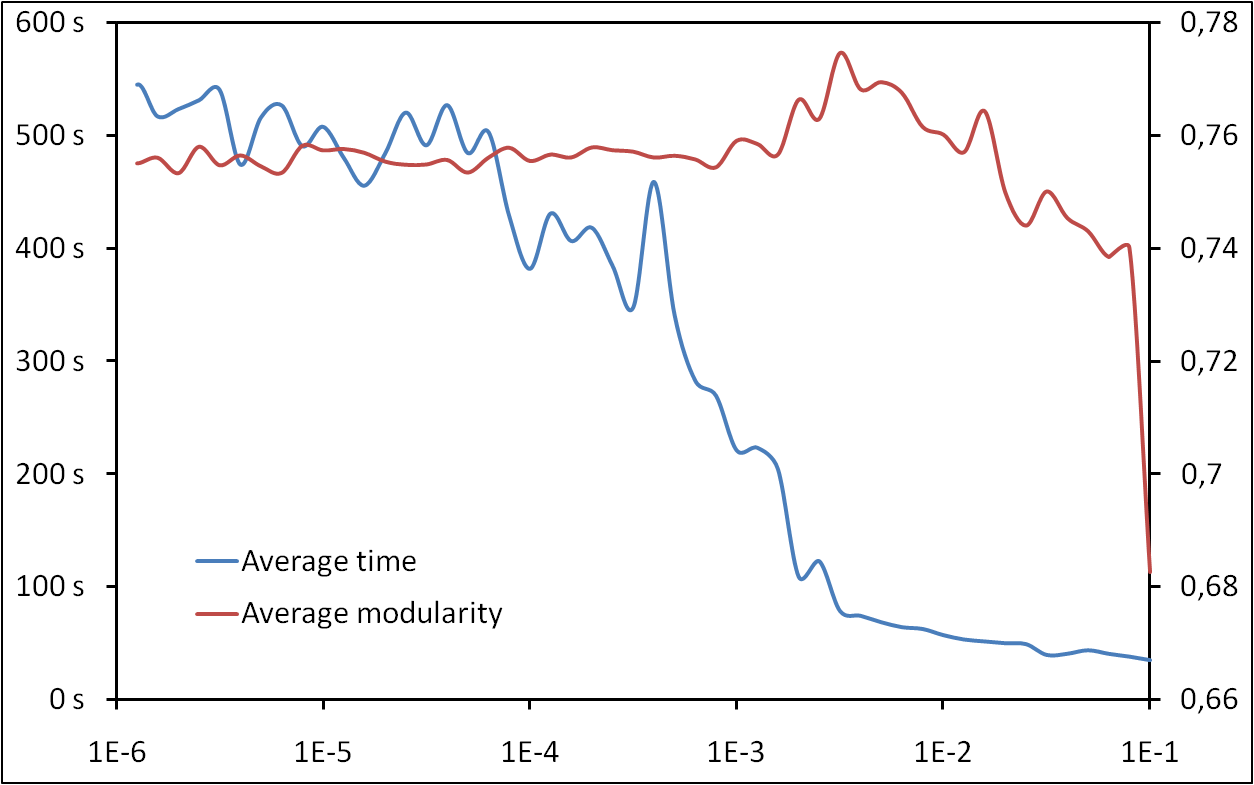Paedophile keywords in eDonkey queries
Dynamics and stability of communities
Profiles of BFS to model internet topology measurements
Life duration of peers in a P2P system
Stability of community detection
Moving nodes along routes
Occurrences of nodes as the measurement duration grows
Efficient Measurement of Complex Networks Using Link Queries
Measurement of eDonkey Activity with Distributed Honeypots
Files diffusion in a edonkey P2P system
Maximizing modularity: time VS. quality
Fast dynamics in Internet topology: preliminary observations and explanations
Clémence Magnien, Frédéric Ouedraogo, Guillaume Valadon, Matthieu Latapy
Fourth International Conference on Internet Monitoring and Protection (ICIMP 2009), May 24-28, 2009, Venice, Italy
By focusing on what can be observed by running traceroute-like measurements at a high frequency from a single monitor to a fixed destination set, we show that the observed view of the topology is constantly evolving at a pace much higher than expected. Repeated measurements discover new IP addresses at a constant rate, for long period of times (up to several months). In order to provide explanations, we study this phenomenon both at the IP, and at the Autonomous System levels. We show that this renewal of IP addresses is partially caused by a BGP routing dynamics, altering paths between existing ASes. Furthermore, we conjecture that an intra AS routing dynamics is another cause of this phenomenon.
Measurement of eDonkey Activity with Distributed Honeypots
Oussama Allali, Matthieu Latapy and Clémence Magnien
Sixth International Workshop on Hot Topics in Peer-to-Peer Systems (Hot-P2P 2009), May 29, 2009, Rome, Italy
Collecting information about user activity in peer-to-peer systems is a key but challenging task. We describe here a distributed platform for doing so on the eDonkey network, relying on a group of honeypot peers which claim to have certain files and log queries they receive for these files. We then conduct some measurements with typical scenarios and use the obtained data to analyze the impact of key parameters like measurement duration, number of honeypots involved, and number of advertised files. This illustrates both the possible uses of our measurement system, and the kind of data one may collect using it.
Diameter of massive graphs
Dynamics of Internet links around a source
Post-Processing Hierarchical Community Structures
Multi-scale visualization of a collaboration dataset
Empreintes conceptuelles et spatiales pour la caractérisation des réseaux sociaux
Bénédicte Le Grand, Marie-Aude Aufaure et Michel Soto
Conférence EGC 2009 (Extraction et Gestion des Connaissances), Strasbourg, France, 27-30 janvier 2009
In this paper, Formal Concept Analysis and Galois lattices are used for the analysis of complex datasets, online social networks in particular. Lattice-inspired statistics computed on the objects of the lattice provide their « conceptual distribution ». An experimentation conducted on four social networks’ samples shows how these statistics may be used to characterize these networks and filter them automatically.

















